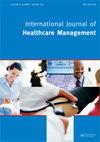New drugs for type 2 diabetes mellitus: The challenge of the health care sustainability combined with a better patient care access
IF 1.4
Q4 HEALTH POLICY & SERVICES
International Journal of Healthcare Management
Pub Date : 2023-05-12
DOI:10.1080/20479700.2023.2210393
引用次数: 1
Abstract
The increased prescribing and dispensing of new drugs for type 2 diabetes mellitus due to less stringent prescription regulations has led both to bringing therapies closer to the patient, as required by post-Covid-19 European policies, and to an unpredictable increase in health care spending. In particular, in Italy, with the introduction of the National Plan for Reconstruction and Resilience, an attempt has been made to give more prescriptive freedom to the General Practitioner (GP). Through the introduction of prescriptive notes, patients can directly go to the primary care physician for the prescription of chronic therapies, without going to the specialist doctor anymore. Note 100, introduced at the beginning of 2022, defines the prescription of specific categories of medicines which are indicated for the treatment of type 2 diabetes mellitus and which are directly prescribed by the GP. This study aimed to analyze the prescribing trend of these medicines, by comparing the first half of the year 2021, without Note 100, with the first half of the year 2022, afterwards the introduction of the new regulations. © 2023 Informa UK Limited, trading as Taylor & Francis Group.2型糖尿病新药:医疗保健可持续性与更好的患者护理途径相结合的挑战
由于不太严格的处方规定,2型糖尿病新药的处方和配药增加,这既导致了新冠肺炎后欧洲政策要求的治疗更接近患者,也导致了医疗保健支出的不可预测增长。特别是,在意大利,随着《国家重建和复原计划》的出台,已试图给予全科医生更多的规定自由。通过引入处方说明,患者可以直接向初级保健医生寻求慢性疗法的处方,而无需再去找专科医生。2022年初推出的注释100定义了治疗2型糖尿病的特定类别药物的处方,这些药物由全科医生直接开具。本研究旨在通过比较2021年上半年(没有注释100)和2022年上半年来分析这些药物的处方趋势,之后出台了新规定。©2023 Informa UK Limited,交易名称为Taylor&Francis Group。
本文章由计算机程序翻译,如有差异,请以英文原文为准。
求助全文
约1分钟内获得全文
求助全文
来源期刊

International Journal of Healthcare Management
HEALTH POLICY & SERVICES-
CiteScore
5.40
自引率
9.50%
发文量
77
 求助内容:
求助内容: 应助结果提醒方式:
应助结果提醒方式:


